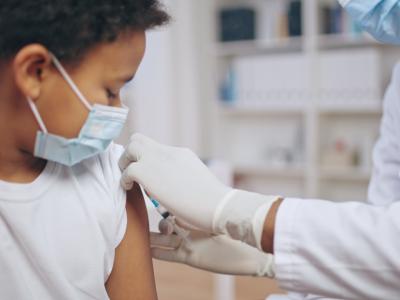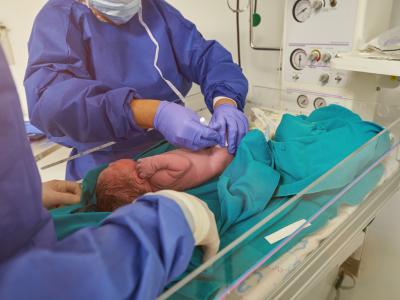Veterinary antimicrobial sales show significant decline in Europe
A new report from the European Medicines Agency (EMA) shows sales of veterinary antimicrobials have fallen by more than 40% since 2011.
In the 25 European Union/European Economic Activity (EU/EEA) countries that provided sales data for all years, overall sales of veterinary antimicrobial drugs fell from 161.4. milligrams per population correction unit (mg/PCU) in 2011 to 91.6 mg/PCU in 2021—a decline of 43.2%. During the period, 19 of the 25 countries saw declines ranging from 11.7% to 60.4%, while 5 countries saw veterinary antimicrobial use increase.
The decline was fostered by lower sales of antimicrobials considered critical for human medicine. Sales of third- and fourth-generation cephalosporins fell by 32.8%, polymyxins by 76.8%, fluoroquinolones by 12.8%, and other quinolones by 85.4%.
EMA officials said the decline indicates that establishing reduction targets, restricting the use of certain antimicrobials in food-producing animals, initiating awareness-raising campaigns, and other measures taken at the national and EU/EEA level are having a significant impact.
"The decrease in sales of antimicrobials for use in animals over ten years shows that EU policy initiatives combined with guidance and national campaigns promoting prudent use of antimicrobials in animals are having a positive effect," Ivo Claassen, PhD, head of the EMA's Veterinary Medicines Division, said in an agency press release.
The report also found that sales of veterinary antimicrobials in 2020 rose by 5.8% from 2019. But the authors say that finding could be the result of a combination of factors and should be interpreted with caution.
Nov 23 EMA report
Nov 23 EMA press release
Study warns of extensively drug-resistant strain of Klebsiella pneumoniae
A new paper published in the Proceedings of the National Academy of Sciences describes the spread of an extensively drug-resistant strain of Klebsiella pneumoniae in Tuscany, Italy.
To understand the regional emergence and transmission dynamics of the protracted outbreak of New Delhi metallo-beta-lactamase (NDM)-producing carbapenemase-resistant K pneumoniae, which was first identified at a hospital in Tuscany in 2018 and continued in 2020 and 2021, a team of Italian, US, and German scientists collected and sequenced the genomes of 117 isolates from 76 patients at several healthcare facilities in southeast Tuscany.
All isolates belonged to the high-risk clone ST-147, showed high genetic relatedness, and were predominantly non-susceptible to all tested penicillins, cephalosporins, carbapenems, and aminoglycosides.
Phylogenetic analysis of the isolates revealed the existence of two clades that emerged in mid-2018 and early 2019. Clade A comprised isolates from 23 patients in three healthcare facilities in southeast Tuscany, and clade B included isolates from 57 patients at a single hospital in Siena. Rapid nosocomial spread of clade B was observed at the hospital from July to December 2019.
When compared with international ST-147 genomes, the outbreak clone from Italy most closely resembled NDM-producing multidrug-resistant K pneumoniae (MDR-Kp) isolates collected from the Middle East in 2016 and 2017. The comparisons further revealed that, since divergence from the ancestor shared with the Middle East lineage, the ST-147 clone from Italy had acquired eight other antimicrobial resistance genes in addition to the NDM-1 gene and genes previously linked to hypervirulence. The plasmids were similar to those found in ST-147 isolates reported in UK hospitals in 2018 and 2019.
"Further studies are needed to fully characterize the role of these plasmids and the drivers of their emergence in distinct lineages of MDR-Kp around the globe," the study authors wrote. "Close monitoring of global K. pneumoniae populations, as well as ongoing, local efforts to contain the dissemination of such high-risk clones, is critical to impede the emergence of this troublesome pathogen."
The authors note that recent surveillance data suggest the outbreak in Italy is ongoing.
Nov 24 Proc Natl Acad Sci USA study
Smartphone app aims to optimize veterinary antimicrobial use
A team of Canadian veterinary and infectious diseases specialists has developed a smartphone app to help promote prudent use of antimicrobials in animals.
The algorithmic app, developed by researchers with the University of Calgary, the Canadian Veterinary Medical Association (CVMA), and the Stewardship of Antimicrobials by Veterinarians Initiative, offers point-of-care treatment recommendations and other reference material for infections in a wide range of animal species. The developers say it will be an ideal tool for veterinarians who treat both companion and food-producing animals.
"This app gives veterinarians guidelines for prescribing antibiotics for species-specific conditions," Dr. John Conly, MD, infectious disease specialist at the University of Calgary's Cumming School of Medicine, said in a university press release. "This is a novel tool which we hope will help promote the optimal use of antibiotics with the aim of reducing antimicrobial resistance."
The app is available to veterinarians, veterinary technicians, and veterinary students across Canada who are members of the CVMA, but Conly says he hopes the platform will be emulated by other countries.
Nov 24 University of Calgary press release














